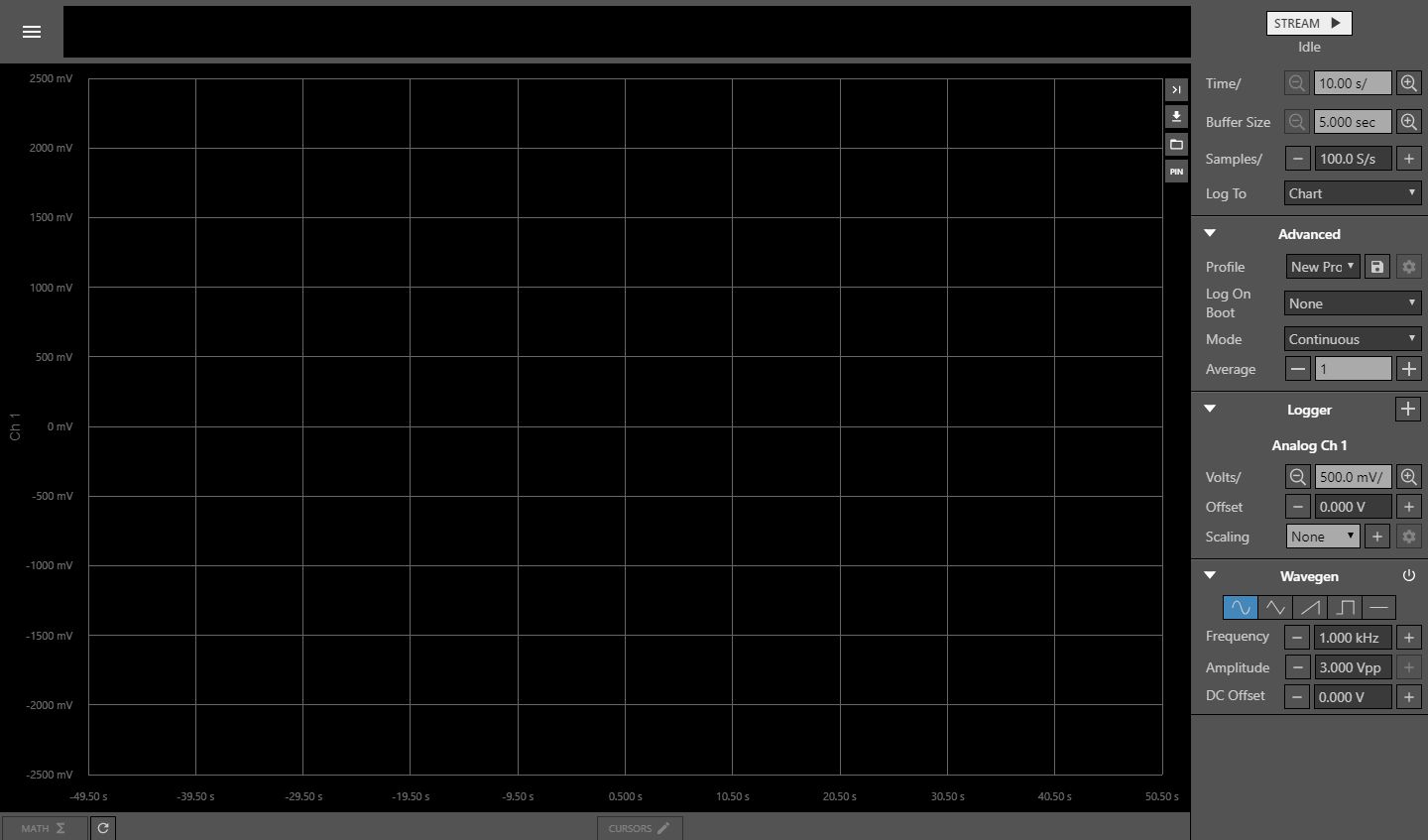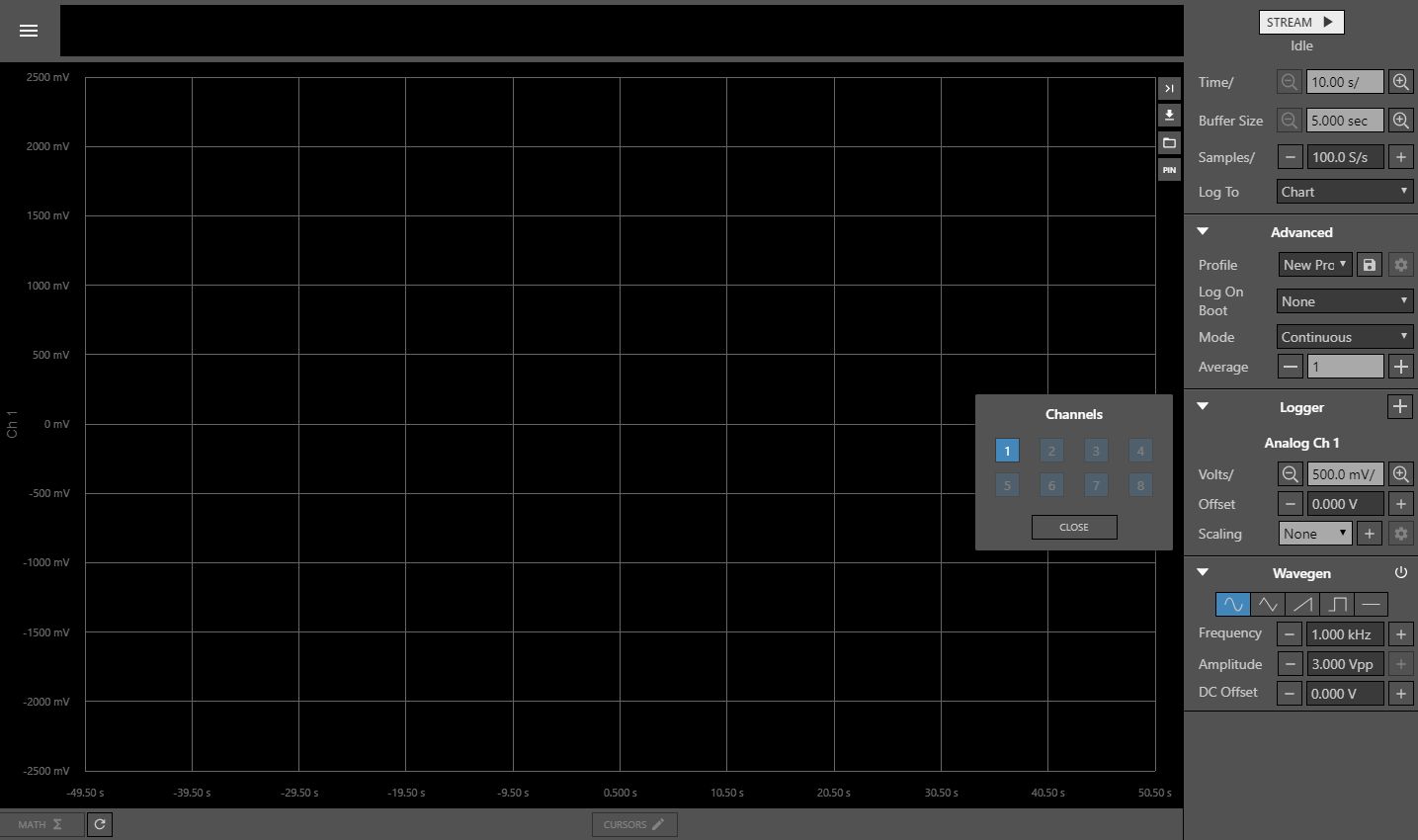Project update 2 of 12
Waveforms Live Screenshots and Q & A
We are about a third into our campaign and 50% funded and I’d like to say a big thank you to all of our backers for helping us get this far!
The OpenLogger team has been hard at work updating the Data Logging User interface, working on adding USB streaming to the firmware, and putting together some demos to show off the potential of OpenLogger. Videos showing the setup experience and the OpenLogger in action will be coming in the next few updates, but for now we’d like to share some images of the UI and ask for any feedback or questions from our backers, or potential backers.
Since our campaign launched, we’ve been getting some great questions. Read on for summaries of the questions and our answers.
Software Programming Languages, Licenses, and Source Code
The OpenLogger firmware and Digilent Agent are written in C++, and WaveForms Live is written in TypeScript. All of these will be posted on GitHub under the MIT license, except where other licensing requirements apply (e.g., the Agent is built using the open source version of QT, which requires the Agent use the GPL3 license). These will be available when we post our first firmware release in december and will be updated at each subsequent release.
OpenScope versus OpenLogger
Many people are familiar with our OpenScope product. OpenLogger has more analog channels (eight instead of two), is higher resolution (16 bits instead of 12 bits), and a lower maximum sample rate (500 kS/sec versus 6.25 MS/sec). OpenLogger also has a newer and more capable Wi-Fi module and microcontroller.
Aggregate and Per-channel Sample Rates
OpenLogger’s 500 kS/sec sample rate refers to the aggregate sample rate — that is, of all the channels together. So, if you were only using one channel, it would be 500 kS/sec, two channels would be 250 kS/sec, and so on.
Triggering and Synchronizing
Since OpenLogger’s analog inputs are designed as logging channels, the triggers on OpenLogger are not like those of an oscilloscope. Instead, the triggers are designed for synchronizing multiple OpenLoggers together. Although all the physical connections on the board are in place for such synchronization, this functionality won’t be implemented in the initial firmware release.
On-board Data Storage
OpenLogger starts acquiring samples when "start" is pressed and will log to the SD card for as long as there is space left for data. You can store multiple channels on the SD card, but that may affect how long you can log for.
You can also store more than one data acquisition on the SD card. For example, if you were to start logging, then stop, then start again, and then stop again, both those sessions can be saved to the same SD card.
Keep reaching out with questions and thanks again for your support!





